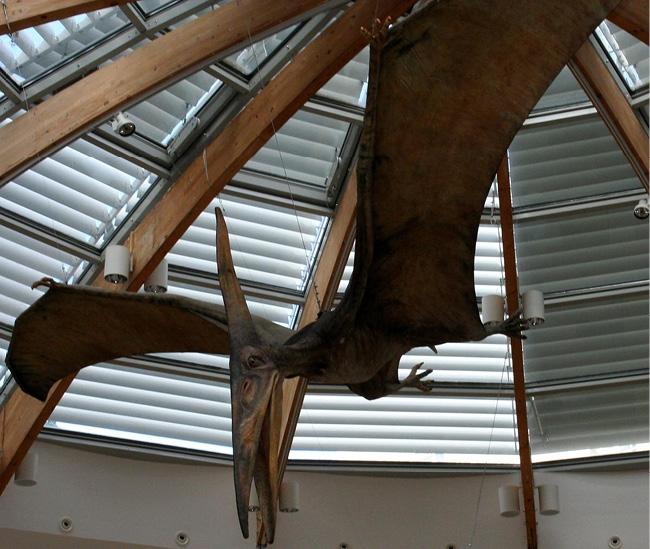Physiology
- Meat-eating dinosaurs (sometimes called therapods, meaning beast-footed) had hooked claws on their toes for ripping flesh, whereas plant-eating ones usually had blunt hooves.
- Therapods generally walked on two feet rather than four, which made them faster and helped them catch prey with their arms.
- Some dinosaur skulls had large holes in them that made their heads lighter. This was especially important for some of the larger dinosaurs, whose heads could be as big as a family car!
- It is thought that the reason many dinosaurs had long tails was to help with balance whilst running or standing up on their hind legs.
- Like lizards today, dinosaurs hatched their young from eggs. The largest eggs were the size of basketballs, and the smallest we have found are just 3cm in diameter.
- Dinosaurs can be divided into two groups. Saurischian means lizard-hips, and these dinosaurs had one hipbone pointing forward, whereas ornithischian dinosaurs had all hipbones pointing backwards like a bird, the word of course meaning bird-hipped. Amazingly however, scientists believe that the birds we know today actually evolved from saurischians not ornithischians!
- The largest herbivores had to eat a ton of food every single day - an incredible volume of vegetation!
- Dinosaurs’ eyes generally faced out on opposite sides of their heads (like a cow) rather than both facing forwards (like a human). This allowed them to see danger coming from a much wider angle.
- We believe that most dinosaurs would have had green and brown scaly skin which would have been effective camouflage amongst the trees and plants which made up their habitat.
- Some scientist believe that a number of dinosaurs would have shed their skin as they grew, just as snakes and lizards do today.

Pteranodon